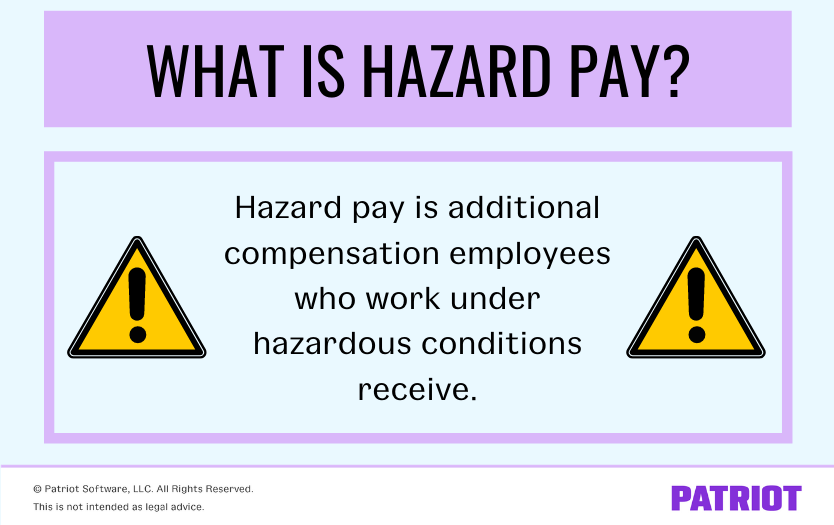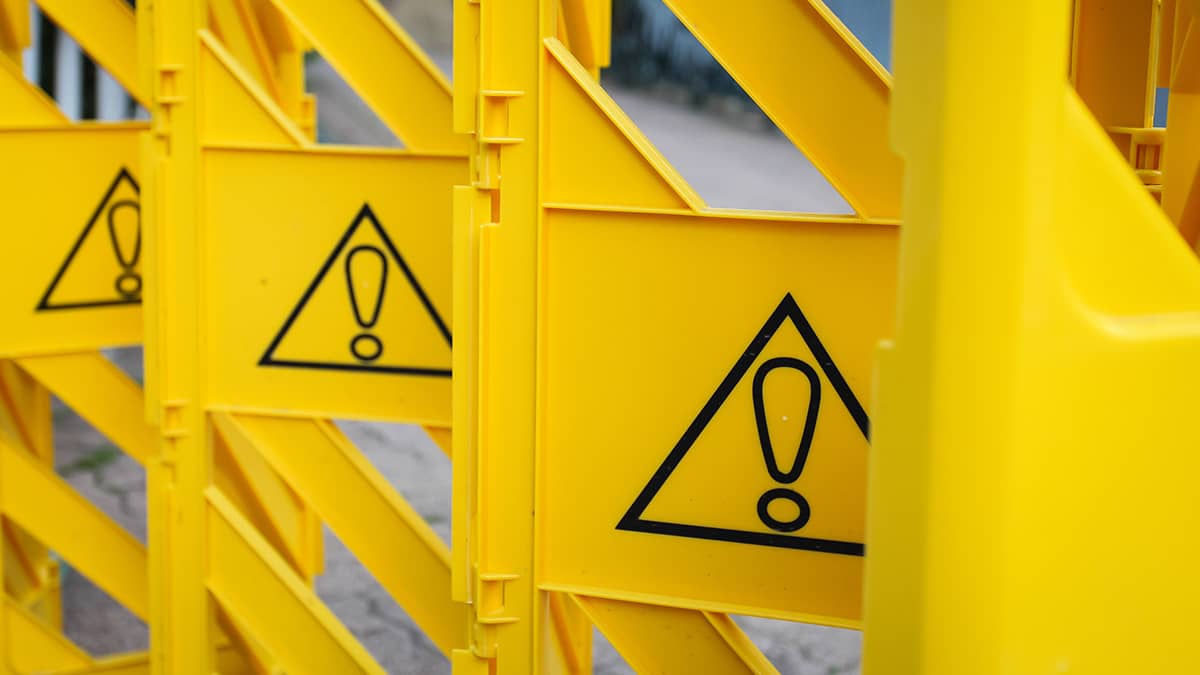If you have employees who work in hazardous conditions, you may want to give them additional compensation for performing dangerous job duties. This is where hazard pay comes into play. Learn all about hazard pay, whether or not it’s mandatory, and how to create a hazard pay policy.
What is hazard pay?
Hazard pay is additional compensation employees who work under hazardous conditions receive. Employees may also receive hazard pay if their work involves physical hardship. The Department of Labor defines physical hardship as “Work duty that causes extreme physical discomfort and distress which is not adequately alleviated by protective devices.”
Essentially, hazard pay is an incentive businesses can offer in exchange for employees to perform dangerous job duties.
Hazard pay is common in industries with hazardous work conditions. Some fields with hazardous conditions may include:
- Healthcare
- Mining
- Construction
- War zones
- Maintenance
- Agriculture
- Dangerous or extreme weather

Is hazard pay mandatory?
There is no law requiring employers to offer hazard pay to employees working in hazardous conditions. In most cases, the employer determines if they want to offer hazard pay, how much the hazard pay will be, and which employees qualify for it.
The Fair Labor Standards Act (FLSA) does not require businesses to offer employees hazard pay. And, there are currently no statewide laws that make it mandatory for private sector employers to provide hazard pay. The FLSA also does not require it for employees working during COVID-19.
However, there are some federal statutes that require hazard pay for federal employees who perform specific types of hazardous work. And some localities, like Birmingham City, Alabama, mandate hazard pay for local government workers.
Check with your state and local laws to ensure you’re compliant with any hazard pay laws and requirements.
How much is hazard pay?
Again, hazard pay rates are left up to the employer. Generally, the hazard pay amount is given in addition to regular wages. And, an employee typically only receives hazardous duty pay for the hours where they worked in hazardous conditions.
In most cases, hazard pay is an increased hourly pay rate. Some employers may offer a flat percentage for time spent in hazardous conditions (e.g., 10% premium while working in hazardous conditions). Others may offer a set fee each month, regardless of how many hazardous hours an employee works. For example, you may pay an employee a flat $350 in hazard pay per month in addition to their regular wages.
Can employees who earn hazard pay still earn overtime pay? Yes, nonexempt employees can receive overtime in addition to hazard pay. Employees are paid overtime based on their total earnings, which includes regular wages plus the hazard pay.
Hazardous pay and COVID-19
The current COVID-19 climate has many employees asking for additional compensation for work that may put them at increased risk of exposure to the coronavirus. Some employers have begun offering hazard pay to compensate employees for the additional risk.
Although some legislation requiring hazard pay for essential workers during COVID-19 has been introduced (e.g., Heroes Fund), nothing is set in stone yet.
In light of COVID-19, some states (e.g., Massachusetts) and cities are taking things into their own hands and are introducing hazard pay legislation for essential frontline workers.
Essential frontline workers are the employees who are most likely to receive hazard pay in regards to the pandemic. These employees have a higher risk of being exposed to COVID-19. Although each state’s definition of “essential frontline worker” varies, it typically includes:
- Doctors and nurses
- Lab technicians
- Pharmacists
- Law enforcement
- Postal workers
- Delivery and truck drivers
- Janitors
- Grocery store workers
Again, private sector small businesses are not obligated to provide hazard pay to essential frontline workers unless a statute or state or local law requires it. Check with your state and locality for more information about COVID-19 hazardous pay and hazard pay for healthcare workers.
Creating a hazard pay policy
Thinking about offering hazard pay to your employees? Great! Then you’ll need to establish a hazard pay policy. Your policy should outline the following information:
- Which employees qualify for hazard pay
- Jobs that are considered hazardous
- How much employees can receive hazard pay
- Whether the pay is a percentage or flat rate
- A breakdown of hazard pay laws, if applicable (e.g., local government law)
- Whether or not hazard pay applies to workplace conditions during COVID-19
Once you establish your policy, have employees read it over and sign a copy of it. Keep the signed employee copies in your records for safekeeping. Include your hazardous pay policy in your employee handbook for easy access.
Need an easy and affordable way to pay your employees? Patriot’s payroll software has you covered. Streamline the way you process payroll with our simple three-step process. What are you waiting for? Start your free trial today!
This is not intended as legal advice; for more information, please click here.



